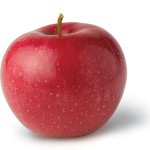An Apple a Day…
 Thanks to the focus on antioxidant phytochemicals over the last few years, deeply colored veggies and (super) fruits have been touted over more prosaic choices like apples, pears and bananas. But – according to a recent study – these “white fruit” mainstays may provide significant health benefits, too.
Thanks to the focus on antioxidant phytochemicals over the last few years, deeply colored veggies and (super) fruits have been touted over more prosaic choices like apples, pears and bananas. But – according to a recent study – these “white fruit” mainstays may provide significant health benefits, too.
Although recent studies have touted vibrantly colored fruits and vegetables as being the most healthful — orange sweet potatoes, green kale and bright blueberries, for instance — it was humbly pale-fleshed apples and pears that came out as big winners in the new study.
The researchers analyzed data on more than 20,000 men and women aged 20 to 65, who were healthy and free of cardiovascular disease at the start of the 10-year study. Based on questionnaires filled out by the participants, researchers tracked their intake of fruits and vegetables by color: green (broccoli, kale, spinach and other leafy greens), orange/yellow (citrus fruits, carrots, peaches), red/purple (tomatoes, beets, cherries) and white (apples, including applesauce, pears, bananas, cauliflower, cucumber, chicory).
…The investigators followed the participants for a decade, logging the number of strokes people suffered. There were 233. When the rate of stroke was compared to the participants’ diet, researchers found no association with the amount of brightly colored fruits and veggies they ate, a bit of a surprise considering that the phytochemicals that lend these foods their hue have been linked with good heart health and a lower risk of cancer.
Participants who consumed 171 grams of white-fleshed produce daily, however — the equivalent of one medium to large apple — were 52% less likely to have suffered a stroke than people who ate less than 78 grams of white produce. Overall, for every 25 grams of white fruit consumed each day, participants saw a 9% reduction in stroke risk.
Looks like there could be a germ of truth to the old saying, “an apple a day keeps the doctor away.”




September 21, 2011
This is a perfect example of how “new and improved” isn’t always better. I see all the new “superfoods” come out and how their greatness is touted. Then you see a study like this that shows sometimes the old simple “tried and true” is just as good if not better.